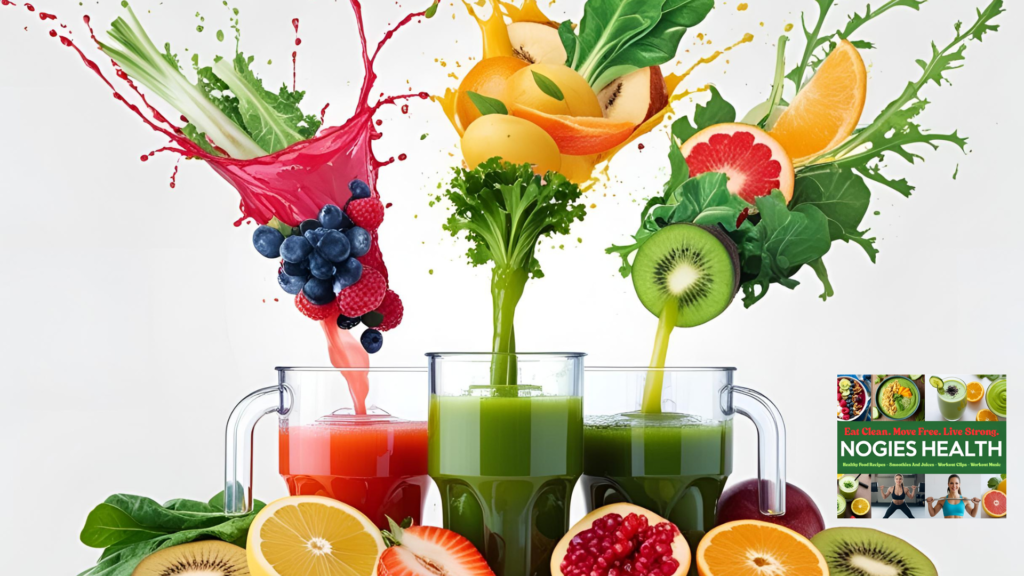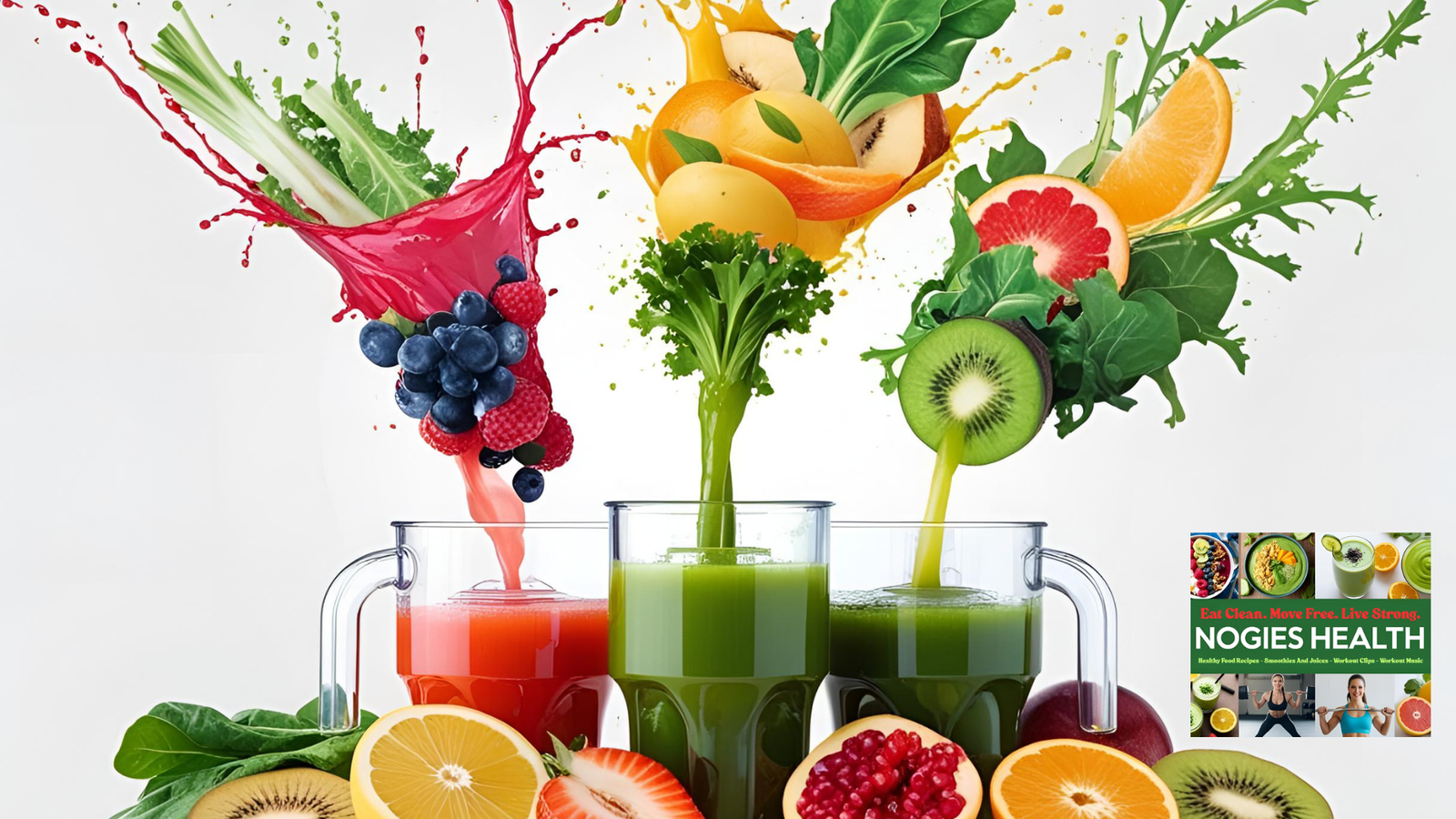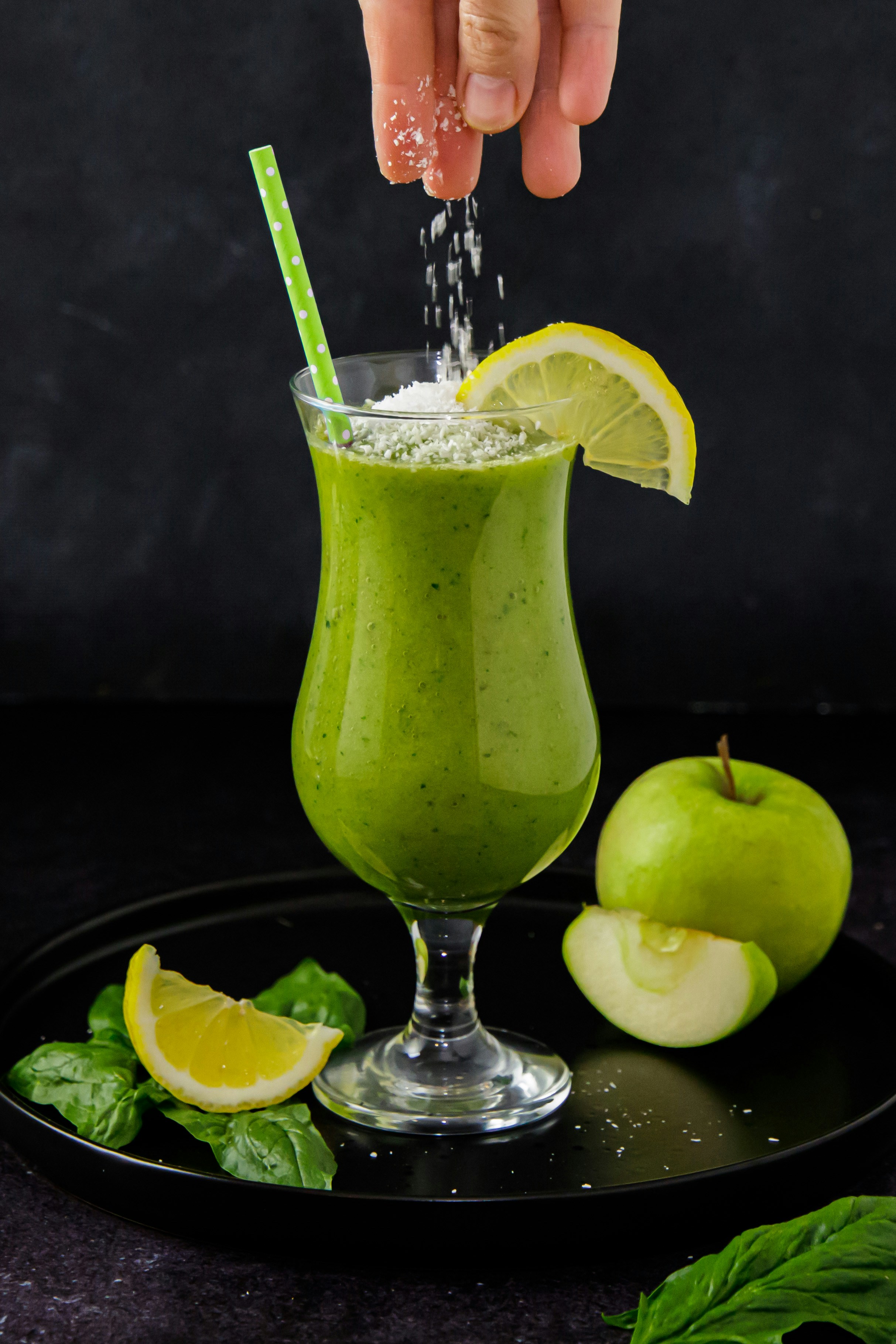
Introduction to Juicing
Juicing is a process that involves extracting the liquid from fruits and vegetables, creating a vibrant drink that is packed with nutrients. Unlike simply eating whole fruits and vegetables, juicing allows for quicker consumption of essential vitamins and minerals, as it often requires a smaller quantity of produce to make a single serving. This method not only preserves the nutrients but also enhances their bioavailability, making it easier for the body to absorb these beneficial compounds efficiently.
One of the primary health benefits of juicing is increased nutrient absorption. When you juice, the fiber content is largely removed, which means the body can readily access the vitamins and minerals in a more concentrated form. This is particularly advantageous for individuals who may struggle to consume the recommended daily servings of fruits and vegetables. Juicing can also provide a boost to your immune system, thanks to the abundance of antioxidants typically found in fresh produce.
Additionally, juicing serves as a powerful detoxification tool. By incorporating a variety of vegetables, especially leafy greens, individuals can support the body’s natural detox processes. Juices can help flush out toxins, as many ingredients possess diuretic properties that encourage hydration and kidney function. Furthermore, regular juicing can promote improved digestion, as certain juices can be soothing to the gastrointestinal tract and aid in digestion.
For beginners, it is important to recognize that starting a juicing routine is simple and can be tailored to fit individual preferences. With a plethora of recipe options available, juicing can easily become an enjoyable and healthful addition to one’s daily regimen. This guide will help you navigate the various ways juicing can enhance your health journey, providing you with the confidence needed to embark on this revitalizing practice.
The Nutritional Benefits of Juicing
Juicing has gained considerable popularity as a health-focused practice that allows individuals to consume vibrant and nutrient-dense fruits and vegetables in a concentrated form. By extracting the liquid from these natural foods, juicing provides an efficient way to intake essential vitamins, minerals, and antioxidants that are vital for overall health. This process retains the beneficial components while discarding the indigestible fiber, offering a quick method to boost nutrient absorption.
One of the most notable advantages of juicing is the high vitamin content found in various fruits and vegetables. For instance, citrus fruits like oranges and lemons are rich in vitamin C, a powerful antioxidant that supports immune function and skin health. Meanwhile, leafy greens such as kale and spinach abound in vitamins A, K, and folate, which are crucial for maintaining healthy vision, bone health, and cellular function. The concentrated nature of juice means that even a small serving can deliver a significant portion of your daily vitamin needs.
Furthermore, minerals such as potassium and magnesium can be easily obtained through juices from sources like beets and carrots. Potassium plays an essential role in maintaining healthy blood pressure levels and proper muscle function, while magnesium contributes to energy production and muscle relaxation. Beyond vitamins and minerals, juicing provides an array of antioxidants that combat oxidative stress in the body, potentially reducing the risk of chronic diseases.
Incorporating juicing into your diet may also enhance your overall well-being. By regularly consuming nutrient-rich juices, you can support better digestion, boost your metabolism, and improve energy levels. For those starting with health-focused diets, juicing offers a simple yet effective way to introduce a wide variety of nutrients, making the transition to healthier eating habits more enjoyable and accessible.
Essential Juicing Equipment
Embarking on a juicing journey requires not only a variety of fresh fruits and vegetables but also the right equipment that facilitates this healthful endeavor. The first and foremost investment for anyone keen on juicing is a reliable juicer. There are three primary types of juicers to consider: centrifugal juicers, masticating juicers, and citrus juicers. Each serves distinct purposes and caters to different juicing needs.
Centrifugal juicers are often favored for their speed and efficiency. They use a rapidly spinning blade to extract juice from produce. This type is typically less expensive and an excellent choice for beginners who want to make quick juices with minimal preparation time. However, they may not be the best option for leafy greens as they can struggle to extract juice effectively from these softer materials.
Masticating juicers, also known as slow juicers, function at a much slower speed, which helps retain more nutrients and enzymes in the juice. They work by crushing and pressing the fruits and vegetables, making them ideal for a wider variety of produce, including leafy greens, wheatgrass, and hard vegetables. Though generally more expensive, these juicers offer superior juice yield and quality, which can be particularly beneficial for health-conscious individuals.
Citrus juicers, on the other hand, are specialized for juicing citrus fruits such as oranges, lemons, and grapefruits. They are typically compact and affordable, making them a practical addition for those who enjoy citrus-based juices or cocktails. Choosing the right juicer is essential for maximizing your juicing experience, tailored to your specific health goals and dietary preferences.
Beyond the juicer, other essential tools include cutting boards, quality knives, and storage containers. A sturdy cutting board and a sharp knife will facilitate efficient prep work, and adequate storage solutions are necessary for preserving fresh juice. High-quality equipment contributes significantly to achieving the best juicing results, ensuring that the process remains enjoyable and productive.
Choosing the Right Ingredients
When embarking on a juicing journey, selecting the right ingredients is crucial to ensure both taste and nutritional benefits. One of the fundamental considerations is to prioritize fresh and organic produce. Organic fruits and vegetables tend to have fewer pesticides and chemicals, making them a healthier choice for juicing. Additionally, fresh ingredients provide maximum nutrients and flavors, creating a more vibrant juice. Look for produce with vibrant colors, firm texture, and an absence of blemishes.
Seasonal ingredients also play a vital role in the juicing process. By choosing fruits and vegetables that are in season, you can take advantage of their peak freshness and availability, which often translates to richer flavors and increased nutrient content. For instance, citrus fruits like oranges and grapefruits shine during winter months, while summer brings an abundance of berries and melons. This seasonal approach not only supports your health but also local farmers and sustainability.
Balancing fruits and vegetables is essential in your juicing recipes. Fruits typically provide sweetness, while vegetables offer a range of essential vitamins and minerals. A good ratio is about two parts vegetables to one part fruit, allowing you to enjoy a naturally sweet beverage without excessive sugar. First-time juicers might find beginner-friendly combinations like spinach, cucumber, and green apple, or carrot, ginger, and orange to be both nutritious and palatable. These pairings not only taste great but also deliver significant health benefits, including improved digestion and enhanced immunity.
Ultimately, the process of selecting the right ingredients for juicing can greatly enhance your experience and outcomes. By emphasizing freshness, seasonality, and a well-balanced mix, you can create juices that are both delicious and packed with nutrients.
Simple Juicing Recipes for Beginners
Juicing can be an enjoyable way to incorporate a variety of fruits and vegetables into your diet, and it is particularly accessible for those who are new to healthy eating. Here are three simple juicing recipes that are not only easy to prepare but also packed with flavors and nutrients.
1. Classic Green Juice
To create a refreshing green juice, combine 2 cups of spinach, 1 cucumber, 1 green apple, and the juice of half a lemon. This green juice is rich in vitamins A, C, and K, as well as antioxidants and dietary fiber. Spinach provides iron, which is essential for energy, while green apples add a sweet note without unnecessary sugar.
2. Carrot and Ginger Juice
For a vibrant and spicy option, blend 4 medium-sized carrots with a thumb-sized piece of fresh ginger and the juice of 1 orange. This juice is perfect for boosting your immune system as it is high in beta-carotene and vitamin C. Carrots support good vision and skin health, while ginger is known for its anti-inflammatory properties.
3. Beetroot and Berry Juice
To enjoy a colorful combination, juice 1 medium beetroot, a handful of fresh strawberries, and 1 apple. This juice is an excellent source of folate, manganese, and potassium. Beetroots are beneficial for improving blood circulation, and berries are rich in antioxidants that may aid overall health and wellness.
These recipes serve as a great introduction to the art of juicing. Each bestows unique health benefits while still packing a flavor punch, making it easy for beginners to explore the world of juicing. Experimenting with these combinations will not only enhance your palate but also encourage healthier habits as you embark on your juicing journey.
Incorporating Juicing Into Your Daily Routine
Integrating juicing into a busy lifestyle can be both manageable and enjoyable. The first step is effective meal planning. Set aside a specific time each week to prepare your juices, selecting recipes that include a variety of fruits and vegetables. This will not only help you stay organized but also ensure you have a diverse range of nutrients in your diet. Consider creating a shopping list for the ingredients needed, making the grocery store visit more efficient.
Batch juicing is a practical approach for those with limited time. By preparing larger quantities of juice at once, you can store portions in airtight containers for consumption throughout the week. It is important to note that fresh juice is best consumed within a few days for optimal flavor and nutritional value, so prioritize producing amounts that suit your needs. Invest in quality containers to maintain freshness and store them in the refrigerator until you are ready to enjoy a refreshing drink.
The timing of your juice consumption can also enhance its benefits. Drinking juice before meals may serve to stimulate digestion and provide essential vitamins to kickstart your day. Alternatively, having a juice as a healthy snack can keep your energy levels sustained between meals. Furthermore, consider creating a juicing schedule aligned with your daily routine, such as integrating it with your breakfast or post-workout recovery. Consistency is key; find a rhythm that works for you, ensuring that juicing becomes an enjoyable habit rather than a chore.
By thoughtfully planning and establishing a routine around juicing, you can effortlessly incorporate nutrient-rich drinks into your everyday life. Through commitment and a little creativity, juicing can be a delightful and healthful addition to your daily regimen.
Common Myths About Juicing
Juicing has garnered significant attention in recent years, leading to a proliferation of myths surrounding its benefits and risks. One prevalent misconception is the belief that juicing serves as an effective detoxification method. Many assume that consuming juice alone can cleanse the body of toxins. However, the human body comes equipped with its own detoxification organs, primarily the liver and kidneys, which efficiently filter harmful substances. Instead of solely relying on juicing for detoxification, it is advisable to maintain a well-balanced diet rich in whole foods to support these natural processes.
Another commonly held belief concerns the sugar content found in fruit juices. Critics often claim that even natural fruit juices contain excessive amounts of sugar, thus contributing to health issues such as obesity and insulin resistance. While it is true that fruit juices can be high in sugar, it is important to note that juices also provide essential vitamins, minerals, and antioxidants. Moderation is key; consuming whole fruits may offer additional fiber that helps slow down sugar absorption. Consequently, integrating both whole fruits and juices into a diet can lead to balanced nutrition.
Lastly, there’s a misconception that juicing can replace whole foods entirely. While juicing can be a beneficial complement to a dietary regimen, it should not act as a substitute for solid foods. Juices often lack the fiber present in whole fruits and vegetables, which is essential for proper digestion and sustained fullness. Whole foods play a crucial role in overall nutrition and should remain a staple in any healthy eating plan. By clearing up these misconceptions, beginners can approach juicing with a more informed perspective and utilize it effectively to enhance their overall health.
Potential Drawbacks of Juicing
While juicing can offer numerous health benefits such as increased nutrient intake and convenience, it is essential to consider some potential drawbacks that may arise. One significant concern is the risk of nutrient loss during the juicing process. When fruits and vegetables are juiced, the fibrous components are often discarded, which means that certain vitamins and minerals may not make it into the final product. Fiber is vital for digestive health, and its absence can lead to issues like constipation and imbalanced blood sugar levels. Moreover, it is important to note that some nutrients, particularly vitamins like vitamin C and certain B vitamins, are sensitive to light and oxygen, which can further diminish their levels in juice.
Another aspect to consider is the high sugar content found in many fruit juices. Although juice can provide a quick source of energy, it often contains concentrated sugars that can lead to spikes in blood sugar levels. This is especially concerning for individuals with diabetes or those who are trying to manage their weight. Even juices that are labeled as “healthy” can include high levels of natural sugars, which, when consumed excessively, may negate the health benefits of juicing.
Moderation is key when incorporating juicing into one’s diet. Over-reliance on juice as a primary source of nutrition can lead to imbalances. It is advisable to use juices as a supplement to whole fruits and vegetables rather than as a substitute. This approach ensures that one receives the comprehensive benefits of both the nutrient-rich juice and the vital fiber found in whole produce. By acknowledging these potential drawbacks, beginners can make informed decisions about how to effectively integrate juicing into their health regimens without compromising their overall dietary balance.
Conclusion and Next Steps
In conclusion, embarking on a juicing journey can serve as a transformative experience for both health and wellness. Throughout this guide, we have explored the numerous benefits associated with juicing, including improved nutrient intake, enhanced energy levels, and potential weight management. Juicing allows individuals to incorporate a variety of fruits and vegetables into their diets, effectively making healthy eating more accessible and enjoyable.
As you consider starting your own juicing regimen, it is essential to approach the process with a clear plan. Begin by selecting a juicer that suits your needs and budget, as this will be a vital tool in your journey. Experiment with different combinations of fruits and vegetables, paying attention to your body’s reactions and preferences. Keeping a juicing diary can be an effective way to log your experiences; note what you juice, how it makes you feel, and any changes you observe in your overall health.
Additionally, to enrich your juicing experience, we recommend following reputable juicing blogs and websites, as these resources often share innovative recipes, tips, and insights that can enhance your journey. Joining online communities dedicated to juicing can also provide encouragement and support as you connect with others who share similar health goals. Engaging with a community can foster motivation and facilitate the exchange of ideas and challenges faced along the way.
Ultimately, juicing should be viewed not just as a health trend, but as a sustainable lifestyle choice. Embrace this opportunity to enhance your health and vitality through wholesome, nutrient-rich beverages. Start your journey today and reap the benefits of a lifestyle rooted in healthy habits.


